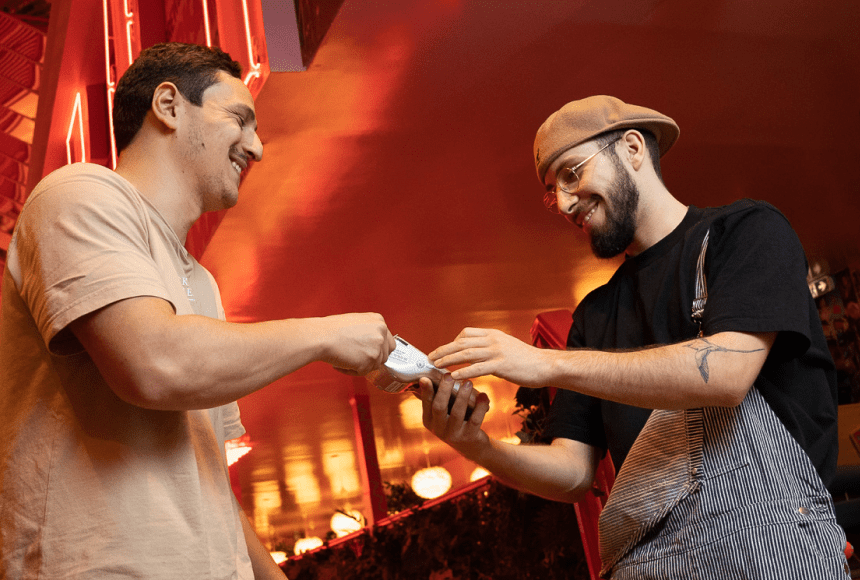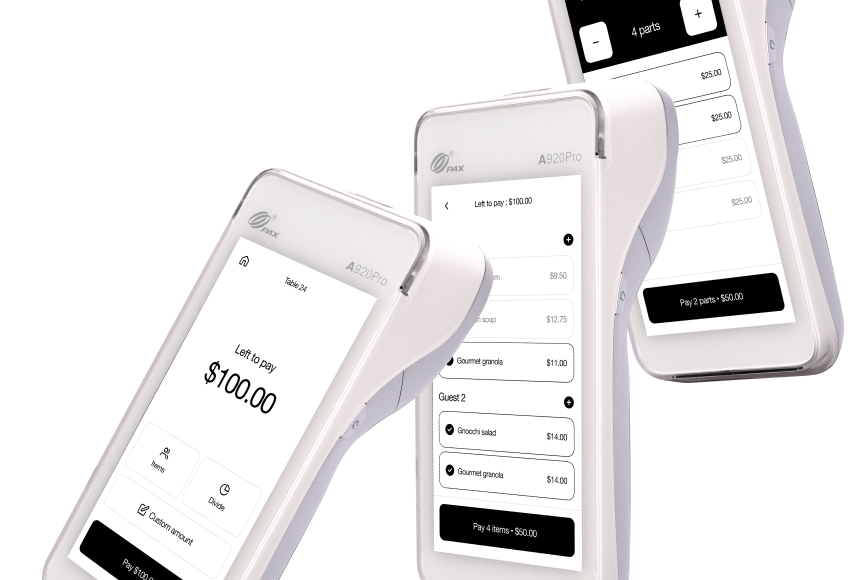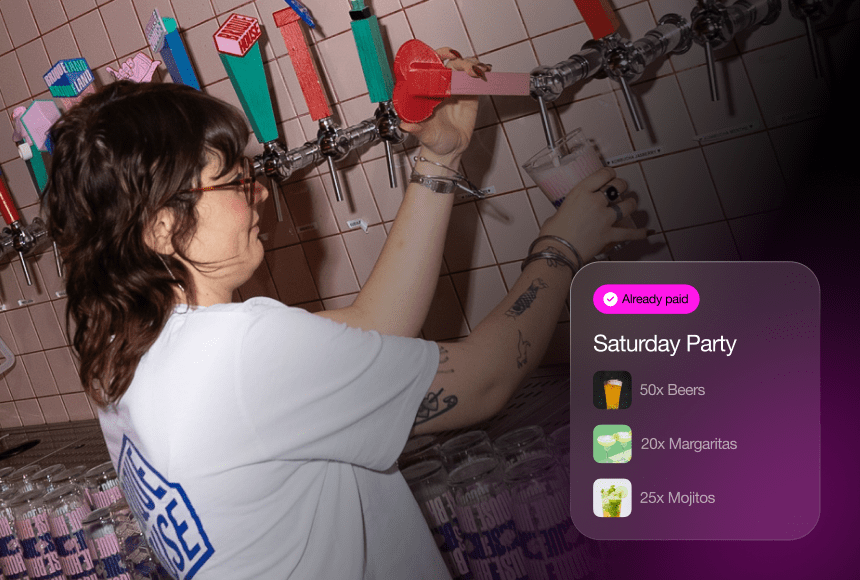
Envisioning the Next Generation of Payment Technology
Why 2025 Marks a Turning Point
Over the past decade, restaurant owners have seen a dramatic evolution in how their guests pay for meals. Where bulky card readers once ruled, we now have sleek, tablet-like devices with interactive screens and real-time reporting. But this shift isn’t over. In fact, the pace of change appears to be accelerating, promising even more robust features, higher security, and stronger integrations in the coming years.
With 2025 on the horizon, you might be asking: “What’s next for smart payment terminals? Will it be all about speed, contactless methods, or new ways to link with my daily operations?” The short answer is yes, and more. Here, we’ll map out likely breakthroughs—touching on everything from biometric authentication to AI-driven loyalty suggestions—so you can prepare your restaurant to meet evolving consumer expectations.
1. Faster, Seamless Hardware with AI Processing
Today’s smart payment terminals are already leaps ahead of old-school card machines, but they often rely on limited CPU power and basic software architecture. In 2025, expect a new wave of terminals with advanced processors and AI-driven features:
- Instant Card and Contactless Validation: The moment a customer taps or inserts their card, the machine verifies payment almost instantly. No lag, no awkward waiting, no jammed receipts.
- Real-Time Fraud Detection: Powered by on-device AI, some terminals may automatically flag suspicious activity, prompting extra verification. That means fewer disputes down the line.
- Predictive Upselling: A more powerful terminal might recognize patterns—like a diner who often orders dessert—then offer a subtle promotion or suggestion right as they’re about to pay. Imagine adding an extra slice of pie with a tap on the payment screen.
Quicker, frictionless transactions benefit both you and your guests. Speed keeps your tables turning, while advanced safeguards reduce headaches from invalid payments or contested charges. It’s a genuine win-win scenario.
2. Biometric Authentication for Secure, Personalized Checkouts
It’s not just about swiping or tapping anymore—biometric authentication is set to make a splash. We already see it on smartphones, where users unlock devices with fingerprints or facial recognition. By 2025, similar technology could appear in restaurants:
- Face or Fingerprint Payment: A kiosk or handheld terminal might scan a quick fingerprint or face ID, instantly pairing it with the customer’s saved payment details. This speeds up the transaction and drastically reduces fraud risk.
- Personalized Offers and Loyalty: Once recognized, the terminal might greet a frequent guest by name, highlight how many loyalty points they have, or offer a special discount for their favorite dish. It’s like having a personal “frequent diner” card built into their face or finger.
Of course, the big hurdle is privacy. You’ll need to ensure your customers trust you with biometric data and that your solution adheres to data-protection laws. Still, the potential for streamlined, highly secure payments could outweigh concerns for many diners.
3. Deeper POS and Inventory Sync
If there’s one pain point that never seems to go away, it’s the complexity of reconciling data between payment terminals and your core systems—like inventory management or staff scheduling. In the near future, expect a big leap forward in connectivity:
- Real-Time Stock Adjustments: The second someone orders a limited-availability special, your payment terminal updates the POS, which in turn notifies the kitchen when stock is running low.
- Automated End-of-Day Tally: You might say goodbye to the nightly scramble of verifying receipts. Terminals would auto-sync with your financial software, generating an accurate daily sales report with minimal manual checks.
- Staff Performance Metrics: With more advanced reporting, you could see how many transactions each server handled, the average tip percentages, and even which items they upsold the most. This can help refine training and reward high performers.
Such streamlined integration eliminates double data entry and hours of back-office tasks. It also reduces errors that can occur when staff are swamped, especially during peak hours.
4. Personalized Tipping and Feedback Prompts
We’ve already witnessed how on-screen tip suggestions can boost gratuities by making it simpler for diners to choose 15%, 20%, or more. But in 2025, expect an even more tailored approach:
- Diner-Specific Prompts: If a regular guest typically tips 20%, the terminal could automatically pre-select that amount, turning the final step into a single tap. That subtle personalization might yield happier regulars—and larger tips for your team.
- Real-Time Feedback Loops: Imagine prompting each diner to rate their experience with a quick one-to-five-star scale after paying. Combined with comments or suggestions, it gives you near-instant insights to adjust operations, address complaints, or celebrate staff successes.
These features not only raise tip averages but also keep customers engaged. Plus, by capturing feedback on the spot, you reduce the chance that disgruntled diners air their grievances later on social media or review platforms.
5. Voice-Enabled Checkouts
Voice assistants like Siri and Alexa have already reshaped how we search for recipes and set kitchen timers. It’s plausible that, by 2025, some payment terminals or integrated solutions will offer voice-activated tasks:
- Server Commands: “Add one more soda and finalize the tab,” or “Remove the extra charge for sauce” might be executed with a quick verbal instruction, no need for manual tapping.
- Diner Interaction: Customers might say, “Pay with credit card” or “Split the bill,” reducing fumbling on-screen—especially helpful if the terminal is shared or physically handed between multiple guests.
While voice technology must overcome ambient noise and accuracy hurdles, the potential for hands-free convenience is clear. This could speed checkout lines in fast-casual or reduce bottlenecks at a crowded bar.
6. Expanded Payment Methods Beyond Cards
Credit and debit cards aren’t going anywhere soon, but the future of payments could accommodate everything from cryptocurrency to regional e-wallets. Even today, some adventurous diners ask if you accept Bitcoin or another altcoin. By 2025, it may be more common for advanced terminals to:
- Accept Local e-Wallets: In areas where digital wallets proliferate (like Alipay in China or Paytm in India), having an integrated approach could attract international tourists or local diners used to certain e-wallets.
- Facilitate Crypto Transactions: While still niche, some early-adopter restaurants already dabble in crypto payments. A smart terminal might convert a digital currency transaction into local currency at the moment of sale, eliminating volatile price swings.
Embracing these trends could open up new customer segments, especially in tourist-heavy spots or forward-thinking cities.
7. Off-the-Grid Reliability
If there’s one universal frustration with advanced tech, it’s how reliant we are on a steady internet connection. Whether due to a spotty Wi-Fi or a random outage, a single disruption can halt the entire payment system. In 2025, expect improved resilience:
- Offline Transaction Storage: Terminals might store encrypted transaction data locally, processing them once online connections restore. No more turning away customers just because your network hiccuped.
- Cellular and Satellite Backup: Some next-gen devices might come with multiple connectivity options, shifting between Wi-Fi, 4G/5G, or even low-Earth orbit satellite signals to ensure continuity.
Such fail-safes help you avoid frantic moments where staff must revert to manual imprinting or IOU scenarios. Reliability fosters trust, both for your customers and your team.
8. Smart Payment Terminal Meets Smart Kitchen
Digital synergy won’t stop at the dining room. In a thoroughly “smart” restaurant, your payment device might talk directly to your kitchen’s display system:
- Order Confirmation: Once a diner pays for an add-on like an extra side, the system instantly sends a note to the kitchen, verifying the up-sell and prompting the cook to prep it pronto.
- Allergy Alerts: If someone mentions a food allergy at checkout, the data might be tagged to that order, so the kitchen is extra vigilant—a boon for safety and compliance.
Though this might sound futuristic, the seeds are already there in POS-connected kitchens. By 2025, the lines between each station in a restaurant will blur, all in the name of smoother operations and minimized confusion.
9. Heightened Focus on Data Privacy and Compliance
As payment terminals become more robust—collecting email addresses, storing loyalty info, or scanning faces—data security becomes even more critical. Laws governing consumer privacy evolve fast, and restaurants must keep up:
- Clear Consent Flows: Guests should know exactly what data is being collected (like an email for receipts or a loyalty program) and have easy options to opt out.
- Encrypted Storage: Payment details, biometric data, and personal info must be encrypted at rest and in transit. Failure to comply could open up legal liabilities or big fines.
- Transparent Policies: Just as you might list menu ingredients for allergy concerns, you’ll need crystal-clear statements about data handling. “Your privacy matters—here’s how we protect it.”
While not as flashy as AI upselling, robust compliance measures will be essential to building and maintaining diner trust in an age of increasingly sensitive data use.
Practical Tips for Restaurant Owners Planning Ahead
With all these potential innovations swirling, how should you prepare? A few straightforward strategies:
- Keep Your Eye on Pilots: Watch for early-adopter restaurants trying out voice-activated or biometric checkouts. Observing their experience can guide you on when to jump in.
- Secure Your Network: A stable, secure wireless network is the backbone of advanced payment solutions. Invest in strong routers, backup internet lines, and proper encryption now.
- Train Staff on Change: Even the cleverest device flops if your servers dislike or don’t trust it. Offer micro-trainings and emphasize how it will reduce their workload or boost their tips.
- Evaluate Costs vs. Gains: High-end technology can be pricey. Weigh the potential for faster table turn, improved loyalty, or labor savings against monthly fees or hardware costs.
- Experiment Cautiously: You don’t have to implement every bleeding-edge feature. If, for instance, voice checkout feels too new, you might start with advanced contactless or QR codes. Grow from there as comfort builds.
A phased approach minimizes disruption while letting you reap incremental benefits along the way.
Embracing the Future with Confidence
The next few years promise a renaissance in how restaurants manage payments. From biometric verification to real-time inventory updates, these forward-looking features might sound futuristic but are likely just around the corner. And while it’s tempting to see them as hype, there’s real value in meeting customers where they are—equipped with smartphones, used to quick gratification, and eager for convenient, secure transactions.
By embracing next-generation payment terminals strategically, you position your restaurant to adapt smoothly to shifting guest demands. Whether that means implementing advanced hardware or opting for a flexible QR code approach from a partner like sunday, staying current ensures you won’t miss out on the benefits.
Ultimately, the best “innovation” is one that aligns with your workflow and goals. So keep an eye on these developments, experiment with what clicks for your brand, and expect significant leaps in user-friendliness, speed, and intelligence by 2025. The payoff? Guests who linger happily for dessert—and staff who can handle peak hours with less stress and more smiles. That’s a future worth investing in.
Find out more today
Drop us your details below and we’ll reach out within the next 24h



